
|
Your guide to recently released books, CDs and other teaching resources. For additional reviews of French-language resources, visit Lu, vu, entendu. With the exception of some classroom sets, items reviewed are available on loan from the Margaret Wilson Library at the College. Contact Olivia Hamilton at 416-961-8800 (toll-free in Ontario 1-888-534-2222), ext 679, or e-mail library@oct.ca. |
Encouraging performance and reading
Pathways
A guide for energizing & enriching band, orchestra, & choral programs
by Joseph Alsobrook
 Both inspirational and practical, this wonderful resource identifies five essential "gifts" that successful teachers bestow on their students: love, attention, accomplishment, boundaries and fun.
Both inspirational and practical, this wonderful resource identifies five essential "gifts" that successful teachers bestow on their students: love, attention, accomplishment, boundaries and fun.
An endorsement by Tim Lautzenheiser describes this as "a compilation of great ideas integrated with a series of pragmatic recipes for success . a profound perspective on what we do and, more importantly, why we do it."
Alsobrook writes, "It only takes a spark to ignite a brilliant flame." As music teachers we support our students through an enriching experience that builds character, shapes attitudes and helps them attain goals.
There are many life lessons in this work, which is inspirational without being over the top. As well, there are useful strategies that all teachers - neophyte or veteran and regardless of subject specialty - can use to improve their practice. Classroom management, assessment, effective listening skills and organizational strategies are explored.
![]() Pathways, GIA Publications, Chicago, ISBN 1579991343, softcover, 228 pages, US$17.95, tel 708-496-3800, fax 708-496-3828, www.giamusic.com.
Pathways, GIA Publications, Chicago, ISBN 1579991343, softcover, 228 pages, US$17.95, tel 708-496-3800, fax 708-496-3828, www.giamusic.com.
John Phillips, head of music at Unionville High School in York Region, was recently on secondment to the Ontario College of Teachers.
Putting on a Show
Theatre for Young People
by Kathleen McDonnell
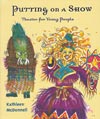 If you have ever wondered where to begin to get students excited and involved in the world of make believe, this 200-page book is a great starting place.
If you have ever wondered where to begin to get students excited and involved in the world of make believe, this 200-page book is a great starting place.
The introduction briefly traces the ancient roots of theatre - in religion, ritual and storytelling - to the theatre of today: "a form of entertainment that people turn to for stories and experiences that take them out of their everyday lives."
The introduction outlines the steps involved and the personnel, including those behind-the-scenes, that are essential to putting on a full-scale show. Black-and-white illustrations provide views of the theatre in many parts of the world. A glossary gives definitions of terminology and more personnel descriptions.
Four plays form the core of the book: Loon Boy, Ezzie's Emerald (with music and lyrics), The Seven Ravens (adapted from the Brothers Grimm) and Foundlings. These plays are aimed at young audiences and include many characters age 11 to 14. Themes touch on issues that young people face: conflicts with parents, abandonment, self-esteem and care for the environment.
The book provides several ideas and scripts to fire your imagination, and helps to take you from "page to stage" with numerous suggestions for engaging students. It demystifies theatre and makes putting on a performance - whether small or grand - very doable.
![]() Putting on a Show, Second Story Press, Toronto, 2004, ISBN 1-896764-89-4, softcover, 200 pages, $14.95, tel 416-537-7850, fax 416-537-0588, info@secondstorypress.ca, www.secondstorypress.on.ca.
Putting on a Show, Second Story Press, Toronto, 2004, ISBN 1-896764-89-4, softcover, 200 pages, $14.95, tel 416-537-7850, fax 416-537-0588, info@secondstorypress.ca, www.secondstorypress.on.ca.
Connie D'Souza teaches at Guardian Angels Catholic elementary school in Brampton.
Literacy Techniques for Building Successful Readers and Writers
2nd edition
by David Booth and Larry Swartz
 This second edition of Literacy Techniques for Building Successful Readers and Writers is a comprehensive handbook for teachers who want to explore the best techniques for teaching reading and writing.
This second edition of Literacy Techniques for Building Successful Readers and Writers is a comprehensive handbook for teachers who want to explore the best techniques for teaching reading and writing.
Based on current research, it offers a tool kit of a hundred activities, procedures and strategies, many of which could be put into practice in any classroom immediately.
The book's seven major sections - What's in a Word, Meaning-Making with Texts, Responding to Texts, The Reading Workshop, The Writing Workshop, The Conventions of Language and Organizing a Literacy Classroom - outline a collection of strategies and activities, briefly discuss the issues, then focus on ready-to-use classroom ideas.
Teachers will find old favourites and forgotten gems as well as many new activities.
With reproducible checklists, guidelines and blackline masters included, this could serve as your central guide to reading and writing programs. It is also handy for last-minute activity ideas.
![]() Literacy Techniques for Building Successful Readers and Writers, Pembroke Publishers, Markham, 2004, ISBN 1-55138-173-7, softcover, 160 pages, $24.95, tel 905-477-0650 or 1-800-997-9807, fax 905-477-3691 or 1-800-339-5568, www.pembrokepublishers.com.
Literacy Techniques for Building Successful Readers and Writers, Pembroke Publishers, Markham, 2004, ISBN 1-55138-173-7, softcover, 160 pages, $24.95, tel 905-477-0650 or 1-800-997-9807, fax 905-477-3691 or 1-800-339-5568, www.pembrokepublishers.com.
Chris Vert is a JK/SK teacher at the Island Public/Natural Science School in Toronto.
Young Adult Literature in the Classroom
Reading It, Teaching It, Loving It
by Joan B. Elliott and Mary M. Dupuis, editors
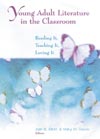 The authors of Young Adult Literature look at work written for students in Grades 6 through 10. The book has three sections: Responding to Reading, Exploring Genres and Studying Authors. An appendix refers us to resources on the Internet. The authors stress that literature - fiction, non-fiction and picture books - can be used across the curriculum, not just in English classes, and they include strategies contributed by teachers. While multicultural literature is considered, the focus here is American.
The authors of Young Adult Literature look at work written for students in Grades 6 through 10. The book has three sections: Responding to Reading, Exploring Genres and Studying Authors. An appendix refers us to resources on the Internet. The authors stress that literature - fiction, non-fiction and picture books - can be used across the curriculum, not just in English classes, and they include strategies contributed by teachers. While multicultural literature is considered, the focus here is American.
A Canadian supplement could help, but this will still be a useful resource.
![]() Young Adult Literature in the Classroom, International Reading Association, Newark, Delaware, 2002, ISBN 0-87207-173-1, softcover, 248 pages, $46.30, distributed in Canada by the Ontario Library Association, tel 416-363-3388 or 1-866-873-9867, fax 416-941-9581 or 1-800-387-1181, publications@accessola.com, www.accessola.com.
Young Adult Literature in the Classroom, International Reading Association, Newark, Delaware, 2002, ISBN 0-87207-173-1, softcover, 248 pages, $46.30, distributed in Canada by the Ontario Library Association, tel 416-363-3388 or 1-866-873-9867, fax 416-941-9581 or 1-800-387-1181, publications@accessola.com, www.accessola.com.
Brenda Dillon is the teacher-librarian at Philip Pocock Catholic Secondary School, Dufferin-Peel Catholic DSB.
Reading Rules!
Motivating Teens to Read
by Elizabeth Knowles and Martha Smith
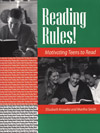 Elizabeth Knowles and Martha Smith describe the problem (teens who don't read), discuss solutions and advocate the creation of a reading environment. They present techniques for motivating teens: reading workshops, literature circles, book clubs and book talks as well as interdisciplinary and thematic units.
Elizabeth Knowles and Martha Smith describe the problem (teens who don't read), discuss solutions and advocate the creation of a reading environment. They present techniques for motivating teens: reading workshops, literature circles, book clubs and book talks as well as interdisciplinary and thematic units.
Chapters include discussion points, annotated lists of journal articles and resource books, and lists of current young adult titles and web sites. Although there is no index, the table of contents is detailed enough to help readers locate specific information.
Reading Rules! is a comprehensive and thorough resource for anyone interested in literacy and reading. Secondary school teachers and teacher-librarians shouldn't be dissuaded by the repeated references to middle-school students or by the Grades 6 to 8 label on the back cover. The focus is Grades 6 to 8, but the techniques, young adult titles and especially the recommended professional readings are appropriate for older students. Standardized testing has made literacy a high-profile concern and Reading Rules! should be in the hands of all those who are addressing this concern.
![]() Reading Rules! Libraries Unlimited, 2001, ISBN 1-56308-883-5, softcover, 168 pages, distributed in Canada by the Ontario Library Association, tel 416-363-3388 or 1-866-873-9867, fax 416-941-9581 or 1-800-387-1181, publications@accessola.com, www.accessola.com.
Reading Rules! Libraries Unlimited, 2001, ISBN 1-56308-883-5, softcover, 168 pages, distributed in Canada by the Ontario Library Association, tel 416-363-3388 or 1-866-873-9867, fax 416-941-9581 or 1-800-387-1181, publications@accessola.com, www.accessola.com.
Brenda Dillon is the teacher-librarian at Philip Pocock Catholic Secondary School, Dufferin-Peel Catholic DSB.
New Series
In the Footsteps of Explorers
Crabtree Publishing
 Though recommended for Grades 2 to 3, this action-and-discovery-oriented history and biography series will inspire other young readers. It connects with the Ontario curriculum for Grade 5 social studies on early civilizations and Grade 6 social studies on the themes of Canada's aboriginal cultures and early exploration.
Though recommended for Grades 2 to 3, this action-and-discovery-oriented history and biography series will inspire other young readers. It connects with the Ontario curriculum for Grade 5 social studies on early civilizations and Grade 6 social studies on the themes of Canada's aboriginal cultures and early exploration.
The books are beautifully illustrated with both contemporary and historical images. They describe the lives of specific explorers while on expedition: what they wore and ate, who they encountered and what they learned. Timelines and fact boxes provide a historical context and each book features maps and information about the political climate that made the explorers venture forth.
![]() In the Footsteps of Explorers series, Crabtree Publishing Company, St. Catharines, 2005, each 32 pages, hardcover $20.76, softcover $9.86, tel 905-682-5221 or 1-800-387-7650, fax 905-682-7166 or 1-800-355-7166, www.crabtreebooks.com, orders@crabtreebooks.com.
In the Footsteps of Explorers series, Crabtree Publishing Company, St. Catharines, 2005, each 32 pages, hardcover $20.76, softcover $9.86, tel 905-682-5221 or 1-800-387-7650, fax 905-682-7166 or 1-800-355-7166, www.crabtreebooks.com, orders@crabtreebooks.com.
Helen Bajorek MacDonald is an elementary teacher with the Kawartha Pine Ridge DSB.
Four novels for young Male readers
The Flags of War
Ages 10-14
by John Wilson
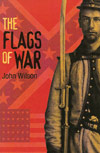 The Flags of War traces four generations of a family from Scotland who settle in the US and Canada, focusing on the American Civil War and the lives of cousins Walt and Nate McGregor. Although they have never met and live in different countries, they are both raised by fathers and live off the land.
The Flags of War traces four generations of a family from Scotland who settle in the US and Canada, focusing on the American Civil War and the lives of cousins Walt and Nate McGregor. Although they have never met and live in different countries, they are both raised by fathers and live off the land.
The Flags of War links nicely to the Grades 7 and 8 history curriculum. Themes include war, slavery, rural life, single-parent families, literacy and friendship. Some details reflecting the treatment of slaves may be upsetting to some readers. Useful appendices provide information on the historical context circa 1860.
This paperback would make an excellent addition to classroom reading buckets and libraries. Although recommended for readers from Grades 5 to 9, the book may be best appreciated by Intermediate students.
![]() The Flags of War, Kids Can Press, Toronto, 2004, ISBN 1-55337-568-8, softcover, 168 pages, $7.95, tel 416-925-5437 or 1-800-265-0884, fax 416-960-5437, webmaster@kidscan.com, www.kidscanpress.com.
The Flags of War, Kids Can Press, Toronto, 2004, ISBN 1-55337-568-8, softcover, 168 pages, $7.95, tel 416-925-5437 or 1-800-265-0884, fax 416-960-5437, webmaster@kidscan.com, www.kidscanpress.com.
Maura Ross is an Intermediate teacher in Simcoe County and a doctoral student at OISE.
Battle Scars
Ages 10-14
by John Wilson
 This sequel to Flags of War continues the story of Nate, Walt and Sunday - representing different factions in the American Civil War: Walt, the north and Nate, the south, Sunday, a freed slave.
This sequel to Flags of War continues the story of Nate, Walt and Sunday - representing different factions in the American Civil War: Walt, the north and Nate, the south, Sunday, a freed slave.
Wilson uses historical events of the Civil War accurately to portray the brutality of war. All the characters end up in Libby Prison in Richmond - on different sides but united in their desire to return to a simpler life. Prison life is harsh and death becomes an everyday occurrence. Escape is the only option and the author describes the most famous escape of the Civil War.
History comes alive when presented through characters as interesting as these. The novel will appeal to secondary students regardless of their interest in historical events because it shows three characters dealing with very difficult challenges and succeeding.
![]() Battle Scars, Kids Can Press, Toronto, 2005, ISBN 1-55337-703-6, softcover, 168 pages, $8.95, tel 416-925-5437 or 1-800-265-0884, fax 416-960-5437, webmaster@kidscan.com, www.kidscanpress.com.
Battle Scars, Kids Can Press, Toronto, 2005, ISBN 1-55337-703-6, softcover, 168 pages, $8.95, tel 416-925-5437 or 1-800-265-0884, fax 416-960-5437, webmaster@kidscan.com, www.kidscanpress.com.
Elda Fredette is a Special Education resource teacher at St. James School in Oakville.
Walking with the Dead
Ages 9-12
by L.M. Falcone
 Alex is the 12-year-old hero of Walking with the Dead. His father, depressed since the death of his wife, has lost interest in Oddities - the weird museum that he runs in the basement of their home. Alex tries to help but when his father brings home an ancient Greek corpse for the grand re-opening of the museum, strange things start to happen. The author interweaves myths of Hades, the Elysian Fields, Medusa and Charon, as Alex and his cousin Freddie embark on a mission to the world of the dead. They dodge monsters, gorgons and three-headed dogs in order to help the lost soul of the Greek corpse.
Alex is the 12-year-old hero of Walking with the Dead. His father, depressed since the death of his wife, has lost interest in Oddities - the weird museum that he runs in the basement of their home. Alex tries to help but when his father brings home an ancient Greek corpse for the grand re-opening of the museum, strange things start to happen. The author interweaves myths of Hades, the Elysian Fields, Medusa and Charon, as Alex and his cousin Freddie embark on a mission to the world of the dead. They dodge monsters, gorgons and three-headed dogs in order to help the lost soul of the Greek corpse.
The story contains a great deal of humour and is well written, with enough mystery to appeal to Junior-level students, while teaching some Greek mythology.
![]() Walking with the Dead, Kids Can Press, Toronto, 2005, ISBN 1-55337-709-5, softcover, 200 pages, $8.95, tel 416-925-5437 or 1-800-265-0884, fax 416-960-5437, webmaster@kidscan.com, www.kidscanpress.com.
Walking with the Dead, Kids Can Press, Toronto, 2005, ISBN 1-55337-709-5, softcover, 200 pages, $8.95, tel 416-925-5437 or 1-800-265-0884, fax 416-960-5437, webmaster@kidscan.com, www.kidscanpress.com.
Elda Fredette is a Special Education resource teacher at St. James School in Oakville.
The Turning
Ages 12 and up
by Gillian Chan
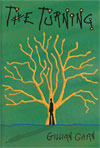 Ben Larsson is a 16-year-old who is angry about his mother's death and about being dragged to the English countryside by his father. He has difficulty with his new school and with his father's efforts to repair their damaged relationship.
Ben Larsson is a 16-year-old who is angry about his mother's death and about being dragged to the English countryside by his father. He has difficulty with his new school and with his father's efforts to repair their damaged relationship.
Then, strange events start to happen: he's attacked by a stranger, the school outcast starts to follow him, he finds a twig image of himself on his doorstep, he is lured into the woods by a mysterious force and is drawn into the battle between good and evil.
The novel is dark and the plot is sometimes difficult to follow, but Ben and his dad do reconcile and it is suited for secondary students.
![]() The Turning, Kids Can Press, Toronto, 2005, ISBN 1-55337-576-9, softcover, 200 pages, $8.95, tel 416-925-5437 or 1-800-265-0884, fax 416-960-5437, webmaster@kidscan.com, www.kidscanpress.com.
The Turning, Kids Can Press, Toronto, 2005, ISBN 1-55337-576-9, softcover, 200 pages, $8.95, tel 416-925-5437 or 1-800-265-0884, fax 416-960-5437, webmaster@kidscan.com, www.kidscanpress.com.
Elda Fredette is a Special Education resource teacher at St. James School in Oakville.
French-language resources
Enseignants efficaces
Enseigner et être soi-même
by Thomas Gordon
Translation by Jacques Lalande of Teacher's Effectiveness Training
 Initially translated into French in 1979, this book proposes that the teacher-student relationship is more important than course content or teaching methods.
Initially translated into French in 1979, this book proposes that the teacher-student relationship is more important than course content or teaching methods.
Gordon says students want to learn and he sees two obstacles: authoritarianism and permissiveness. He proposes three solutions:
- active listening - remaining open to the ideas of young people while reformulating what they say (The non-judgmental approach allows them to solve their problems on their own.)
- the I-message - a way of expressing problems honestly
- a win/win approach to conflict resolution - encouraging parties to co-operate.
This book illustrates how to enhance self-respect and respect for others.
![]() Enseignants efficaces, Éditions de l'Homme, Montréal, 2005, ISBN 2-7619-2137-2, softcover, 256 pages, $29.95, tel 514-523-1182, fax 514-597-0370, edhomme@sogides.com, www.edhomme.com.
Enseignants efficaces, Éditions de l'Homme, Montréal, 2005, ISBN 2-7619-2137-2, softcover, 256 pages, $29.95, tel 514-523-1182, fax 514-597-0370, edhomme@sogides.com, www.edhomme.com.
Véra Nochtéva is a high school French teacher at Ashbury College, Ottawa.
McWiz Junior
French resource from the McWiz Collection
 McWiz junior, a game for 6- to 12-year-olds, consists of four jigsaw puzzles and 400 flashcards with questions (three questions per card, geared to different ages). The questions cover general cultural knowledge in French, mathematics, science, English and Spanish.
McWiz junior, a game for 6- to 12-year-olds, consists of four jigsaw puzzles and 400 flashcards with questions (three questions per card, geared to different ages). The questions cover general cultural knowledge in French, mathematics, science, English and Spanish.
Danièle Atwell tested the game with Grades 3 and 6 students in Barrie who reported: "It's fun! . very interesting and we learn new things . not too easy and not too hard."
I did find one mistake: 7 divided by 0 is not 0. Younger students have trouble with this concept, so it's important not to teach mistakes. I'd simply remove this card, because if you want students to have fun as they learn, this game is a must.
![]() McWiz Junior (English & French versions), Les Jeux McWiz/McDistribution Plus, Cap-de-la-Madeleine, Québec, 2004, $29.95, tel 819-691-1252 or 1-888-691-2849, fax 819-691-2075, bob@mcwiz.com, www.mcwiz.com.
McWiz Junior (English & French versions), Les Jeux McWiz/McDistribution Plus, Cap-de-la-Madeleine, Québec, 2004, $29.95, tel 819-691-1252 or 1-888-691-2849, fax 819-691-2075, bob@mcwiz.com, www.mcwiz.com.
Suzanne Vanrullen, a math and science teacher in Ontario, Manitoba and France, retired in 2004 from école secondaire Embrun (CSCDEO) where she was the guidance leader teacher.
Programme d'activités en service de garde
by Andrée Laforest
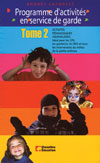 What a gold mine! This follow-up to Andrée Laforest's successful first volume is a pedagogical tool that has everything: recipes, songs, nursery rhymes and more. Topics are organized by month or by week. She offers daily schedules suggesting a discussion topic, well-known and adapted songs and related activities.
What a gold mine! This follow-up to Andrée Laforest's successful first volume is a pedagogical tool that has everything: recipes, songs, nursery rhymes and more. Topics are organized by month or by week. She offers daily schedules suggesting a discussion topic, well-known and adapted songs and related activities.
Some stories may be a little long for two- to five-year-olds. And those not familiar with passe-partout or traditional French songs may have some trouble.
Nonetheless the book is well structured and very useful for kindergarten teachers and parents.
![]() Programme d'activités en service de garde, Volume Two, Chenelière Éducation, Montréal, 2005, ISBN 2-7651-0421-2, softcover, 456 pages, $49.95 tel 514-273-1066 or 1-800-565-5531, fax 514-276-0324 or 1-800-814-0324, cheneliere@cheneliere-education.ca, www.cheneliere-education.ca.
Programme d'activités en service de garde, Volume Two, Chenelière Éducation, Montréal, 2005, ISBN 2-7651-0421-2, softcover, 456 pages, $49.95 tel 514-273-1066 or 1-800-565-5531, fax 514-276-0324 or 1-800-814-0324, cheneliere@cheneliere-education.ca, www.cheneliere-education.ca.
Caroline Fredericks is a College translator and the mother of a four-year-old boy.









